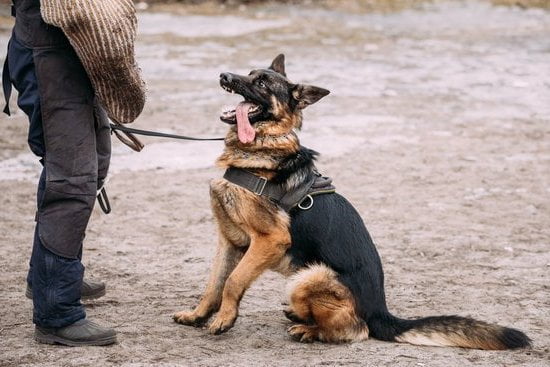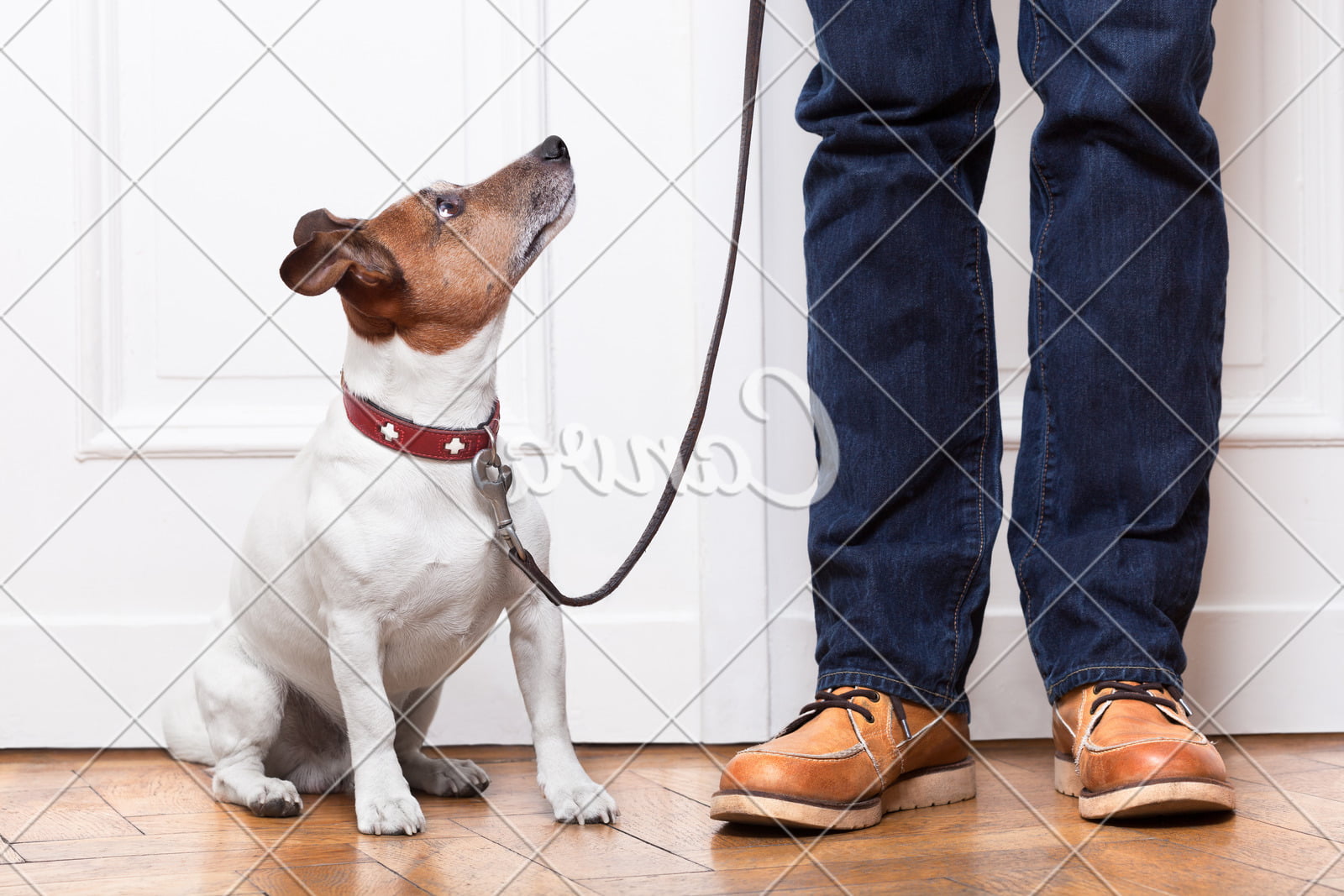A bell trainer for dogs is a valuable tool in teaching your furry friend how to communicate their needs effectively. Whether it’s for potty training, housebreaking, or behavioral training, using a bell trainer can make a significant difference in your dog’s learning process. This article will guide you through the process of bell training, its importance, and the benefits it brings to both dogs and their owners.
Bell training is essential for dogs as it provides them with a way to communicate their needs and desires without resorting to unwanted behaviors such as scratching or barking. By learning how to use a bell trainer, dogs can alert their owners when they need to go outside, ask for food or water, or indicate any other specific need they may have. This not only enhances communication between dogs and their owners but also promotes positive behavior in pets.
Using a bell trainer for dogs comes with various benefits that extend beyond simple communication. It serves as mental stimulation for your pet, helping them understand cause and effect, while also promoting independence and confidence.
Additionally, bell training provides peace of mind for pet owners by reducing the likelihood of accidents indoors and fostering a harmonious relationship between dogs and their human companions. In the following sections, we will explore the mechanics of bell training, how to choose the right bell trainer for your dog, real-life success stories, and much more.
How Does a Bell Trainer Work?
A bell trainer for dogs is a useful tool that can be used to teach your canine companion how to communicate their needs. This training method involves teaching your dog to ring a bell whenever they need to go outside to relieve themselves or simply when they want your attention. The bell becomes a form of communication between you and your dog, allowing them to signal their needs effectively.
Step-by-Step Guide on How to Use a Bell Trainer for Dogs
To start bell training your dog, you will need to hang a small bell next to the door that your dog uses to go outside. Begin by reinforcing positive behavior around the bell – encourage your dog to sniff or touch the bell with their nose or paw.
Every time they interact with the bell, offer praise and rewards such as treats. Gradually, as your dog gets comfortable with the bell, start associating ringing the bell with going outside or getting a reward.
Tips for Effective Bell Training
Consistency and patience are key when implementing a bell trainer for dogs. It’s important to stick to a routine and reinforce positive behavior during training sessions. Additionally, using high-value treats can help motivate and encourage your dog during the training process. It’s also essential not to force or intimidate your dog into interacting with the bell, as this could lead to negative associations with it.
Common Mistakes to Avoid When Using a Bell Trainer for Dogs
One common mistake pet owners make when using a bell trainer for dogs is giving in too quickly if their pet doesn’t immediately catch on. Bell training takes time and repetition, so it’s crucial not to give up too soon.
It’s also important not to punish or scold your dog if they misuse the bells – instead, focus on positive reinforcement and redirecting unwanted behavior. Another mistake is not maintaining consistency in using the bells – ensuring everyone in the household follows the same routine is vital for successful training.
Choosing the Right Bell Trainer for Your Dog
Different Types of Bell Trainers Available
There are several types of bell trainers for dogs, each with its own set of features and benefits. Some common options include hanging bells, touch-sensitive bells, and electronic doorbells specifically designed for dogs.
Hanging bells often come in a strip that can be attached to a door or wall, while touch-sensitive bells have a pad that dogs can tap with their paw or nose to produce a sound. Electronic doorbells are customizable and can be programmed to emit different tones or melodies when triggered by your dog.
Factors to Consider When Selecting the Best Bell Trainer for Your Dog
When choosing a bell trainer for your dog, it’s important to consider factors such as size and durability. The bell trainer should be suitable for the size of your dog and made from sturdy materials that can withstand daily use.
Additionally, consider the ease of installation and adjustability of the bell trainer to ensure it fits seamlessly into your home environment. It’s also beneficial to look for features such as weather resistance if you plan to use the bell trainer outdoors.
Reviews of Top-Rated Bell Trainers for Dogs
Reading reviews from other dog owners can be helpful in determining which bell trainer may be best suited for your furry companion. Look for feedback on reliability, ease of use, and effectiveness in helping dogs learn how to use the bell trainer. Online resources and pet supply stores often provide customer reviews and ratings that can guide you in selecting a high-quality bell trainer for your dog.
By considering these factors and researching various bell trainers available, you can make an informed choice that will benefit both you and your canine companion in their training journey using a
Training Your Dog to Use a Bell Trainer
Bell training for dogs is a simple and effective method for teaching your furry friend how to communicate their needs. Whether it’s letting you know when they need to go outside or when they’re ready for dinner, using a bell trainer can help improve communication between you and your dog. Here’s a step-by-step guide on how to train your dog to use a bell trainer:
1. Introducing the bell: Start by hanging the bell near the door that you typically use to take your dog outside. Encourage your dog to sniff and investigate the bell without forcing them to touch it.
2. Association training: Every time you take your dog outside, gently nudge the bell with their nose or paw before opening the door. This will help them associate using the bell with going outside.
3. Positive reinforcement: Whenever your dog interacts with the bell, whether intentionally or accidentally, be sure to praise and reward them with a treat or verbal praise.
4. Schedule practice sessions: Set aside dedicated time each day to practice using the bell with your dog. Consistency is key in helping them understand the purpose of the bell trainer.
5. Gradual independence: As your dog becomes more comfortable with the bell, slowly reduce assistance until they are able to ring it independently.
When introducing a new tool such as a bell trainer for dogs, it’s important to remain patient and consistent in your training efforts. Avoid common mistakes such as scolding your dog for ringing the bell at inappropriate times or failing to reinforce positive behavior during practice sessions. With perseverance and positive reinforcement, you’ll soon have a well-trained pup who knows how to effectively communicate using their new bell trainer.
Incorporating Bell Training Into Your Dog’s Daily Routine
Using a bell trainer for dogs can be an effective way to establish communication with your furry friend and integrate proper routines into their daily lives. Incorporating bell training into your dog’s daily routine can be particularly beneficial for housebreaking, potty training, and overall behavioral training. By following a few simple steps and being consistent with the training, you can help your dog become more independent and well-behaved.
One of the most common uses of a bell trainer for dogs is for housebreaking. By teaching your dog to ring the bell when they need to go outside, you are giving them a clear and audible way to communicate their needs. This not only helps prevent accidents inside the house but also strengthens the bond between you and your pet as you respond to their cues.
Potty training is another area where incorporating a bell trainer can be helpful. By associating the sound of the bell with going outside to do their business, dogs can quickly learn to use the bell as a signal for when they need to relieve themselves.
This method is especially useful for puppies who are still learning bladder control and need a clear indication of when it’s time to go out. Overall, incorporating bell training into your dog’s daily routine can lead to improved communication between you and your pet, ultimately resulting in a happier and better-behaved canine companion.
| Benefits of Bell Training | How Bell Training Can Help |
|---|---|
| Establishes clear communication between owner and dog | Strengthens the bond between owner and pet |
| Aids in housebreaking and potty training | Increases independence in dogs |
| Promotes positive behavioral training | Reduces indoor accidents |
Real-Life Success Stories
Many dog owners have experienced great success with the use of a bell trainer for dogs in their homes. Here are some real-life success stories from pet owners who have incorporated bell training into their daily routines:
- Sarah from New York: “I was at my wits’ end trying to housebreak my new puppy until I discovered the bell trainer for dogs. Within just a few weeks, my puppy learned to ring the bell when he needed to go outside. It has made potty training so much easier and less stressful for both of us.”
- Mike from California: “I have a busy schedule, and it was challenging for me to keep track of when my dog needed to go out. The bell trainer has been a game-changer for us. My dog quickly picked up on using the bell, and now I never miss his signals. It has improved our communication and strengthened our bond.”
- Jessica from Texas: “Bell training has not only helped with potty training but also with behavioral issues. My dog used to scratch at the door or bark when he wanted attention, but now he knows to ring the bell instead. It’s been amazing to see how this simple tool has transformed his behavior.”
These stories demonstrate the positive impact that a bell trainer for dogs can have on both pets and their owners.
Maintenance and Care for Bell Trainers
Bell training for dogs is a valuable tool in helping to establish communication between dogs and their owners. Once your dog has been successfully trained to use a bell trainer, it is important to properly maintain and care for the equipment to ensure its effectiveness and longevity.
Cleaning your bell trainer regularly is essential to prevent the buildup of dirt, bacteria, and odors. Use a mild soap and water solution to wipe down the bells and any other components of the trainer. Be sure to thoroughly dry all parts before allowing your dog to use the trainer again.
In addition to regular cleaning, it is important to inspect your bell trainer for any signs of wear and tear. Check for loose or broken parts, frayed straps, or any other damage that may compromise the functionality of the equipment. If you notice any issues, take the necessary steps to repair or replace the affected components.
Proper storage of your bell trainer is also crucial in maintaining its condition. When not in use, store the trainer in a clean, dry area where it is not exposed to extreme temperatures or excessive humidity. This will help prevent damage and deterioration of the materials over time.
| Maintenance Tips | Care Tips |
|---|---|
| Clean regularly with mild soap and water. | Inspect for wear and tear. |
| Thoroughly dry all parts after cleaning. | Proper storage in a clean, dry area. |
| Repair or replace damaged components. | Avoid exposure to extreme temperatures or humidity. |
Conclusion and Next Steps
In conclusion, a bell trainer for dogs can be an incredibly effective tool for pet owners looking to improve their dog’s behavior and communication. The benefits of using a bell trainer are numerous, including a more efficient housebreaking process, better communication between pet and owner, and the reinforcement of positive behaviors.
By incorporating bell training into your dog’s daily routine, you can set them up for success and create a harmonious living environment for both you and your furry friend.
As you consider implementing bell training with your dog, it’s important to remember that consistency is key. Establishing a routine for bell training and reinforcing positive behavior will be essential in ensuring successful results. Additionally, carefully considering the type of bell trainer that best suits your dog’s needs and lifestyle will contribute to a smoother training process.
For those interested in learning more about bell training for dogs or seeking additional resources, there are plenty of guides and tutorials available online to assist you in the process. With dedication and patience, you can look forward to experiencing the positive impact that bell training can have on your dog’s behavior and overall well-being. Start bell training your dog today and discover firsthand the difference it can make in their life as well as yours.
Frequently Asked Questions
Is Bell Training Good for Dogs?
Bell training can be very effective for dogs, as it provides them with a clear signal for when they need to go outside to relieve themselves. It helps reinforce the association between the sound of the bell and going potty outside.
How Long Does It Take to Bell Train a Puppy?
The length of time it takes to bell train a puppy can vary depending on the individual dog. Some puppies may catch on quickly within a few weeks, while others may take longer. Consistency and positive reinforcement are key in this training process.
Can an Older Dog Be Bell Trained?
Yes, older dogs can be bell trained as well. Although it may take a bit more time and patience compared to training a puppy, older dogs can still learn new behaviors and adapt to using a bell to signal when they need to go outside. Positive reinforcement is crucial in this process.

Welcome to the blog! I am a professional dog trainer and have been working with dogs for many years. In this blog, I will be discussing various topics related to dog training, including tips, tricks, and advice. I hope you find this information helpful and informative. Thanks for reading!





